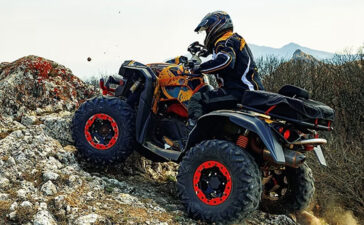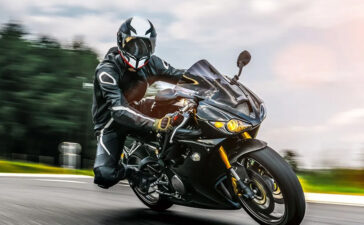The Best Time to Replace
While serious wear and tear is the most obvious reason to tires, it can be hard to narrow that down. Consider the following categories and see if you should swap your tires.
Treads
Running on over-worn treads risks losing grip or blowouts. Generally, the least manageable tread is 1/32 of an inch and can easily be checked by placing a penny into the tread face down; if any tread touches Lincoln, you have 1/16 an inch remaining.
Damage
Regularly look for imperfections, lost lugnuts and broken chords and change tires when you sense a problem.
Age
While tires wear down with age, you can check your tires’ age by examining the sidewall.
Style
Sometimes you might want to switch models out for grip or endurance. It is important to understand the differences in classifications to discern the best motorcycle tires for you.

An Assessment of Styles
Here is a breakdown of the qualities of each major category.
-
Cruising/Touring.
These are made with hardier rubber compounds for heavier loads and long-distance travel. While ill-suited for high speeds or tight corner, they are ideal for pavement and wet conditions.
-
Dual Sport/Adventure Tour.
Treads can range from heavy street to knobby. Dual sports are listed in ratios like “80/20” to signify their primary focus between street and off-road.
-
Sport/Racing.
These are built for gripping without losing speed or mileage. While sport tires can cover a variety of surfaces and conditions, they tend to be softer than cruisers. Street sport tires have greater tread than race tires but less than is common to cruiser or regular street bike tires. Sport tires also come in rain varieties.
- Race and track tires are close to sport tires but constructed with a greater specialization to accommodate grip and high-speed travel. Racing sport tires, also known as “racing slicks,” have barely any tread. Racing tires’ triangular profiles make them the best motorcycle tires for angular cornering. These tires also need to be warmed up in advance.
-
Off-Road.
Manufacturers know there are many types of dirt and give detailed info for every tire size’s maximum traction and performance. Blindly changing sizes can lead to dangerous cornering or lost traction. The most important factor in off-road tires is their compound; look into the best compounds for your preferred driving areas and stick to those.
Construction
Bias-Ply
These have their plies built along the tire’s bias, with each ply criss-crossing over. While older tires used ply count to note construction, technology and the market have shifted its relevance to overall strength.
Bias-ply tires have stiff sidewalls, ideal for heavy bikes or bikes with heavy loads and great to stall washouts from cornering. Bias-ply is known for its high mileage and, notable to spiked rims and off-road cycles, is tube-exclusive. The greatest downside to bias-ply is that it poorly handles high-heat activities like cycling at high-speed or severe cornering.

Radial
Radial tires have their plies applied at right angles, resulting in a wrapping effect. Most radial tires are steel-belted for stability and durability. While radial sidewalls are softer and thinner than bias-ply and tend to incorporate Kevlar for reinforcement, their flexibility results in smoother riding.
The best benefit of belted radial tires is heat-dissipation, allowing the bike to go high speeds without damaging tires. Sadly, their thin sidewalls have less resilience to puncturing.
Compounds
Where single-rubber compounds lose either mileage or grip, dual compounds grant greater mileage without a hit to grip. High-wear compounds grant greater straight-line mileage and softer compounds, placed along the shoulders, offer more grip.









